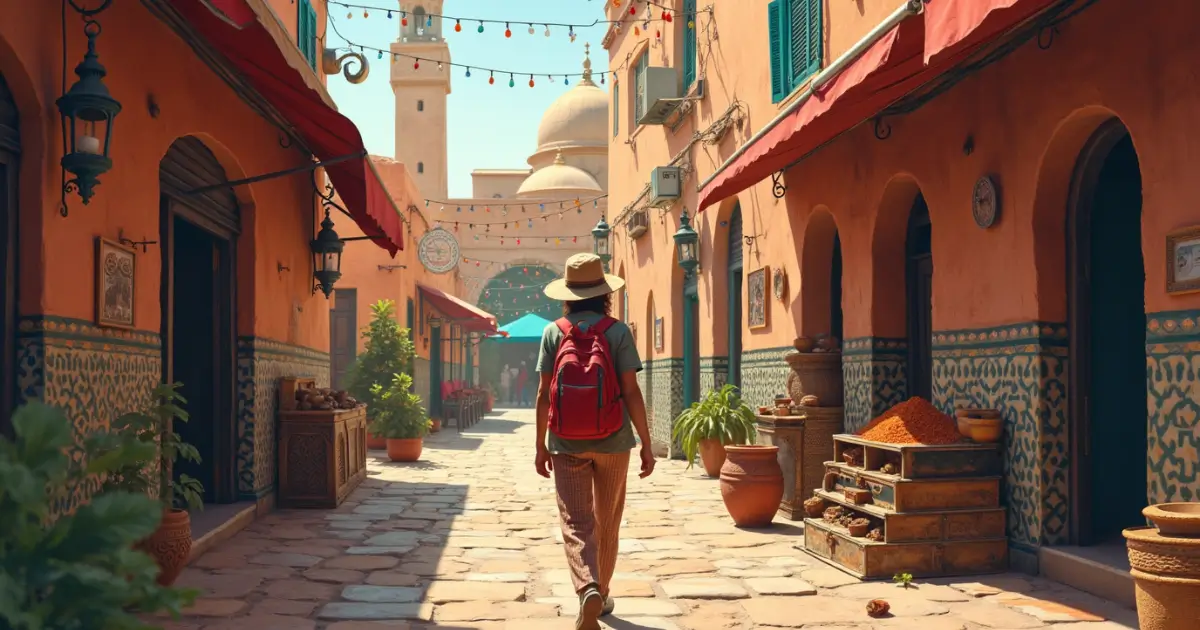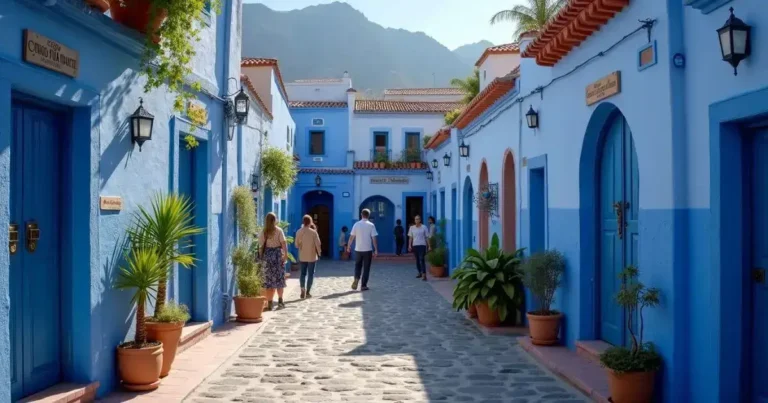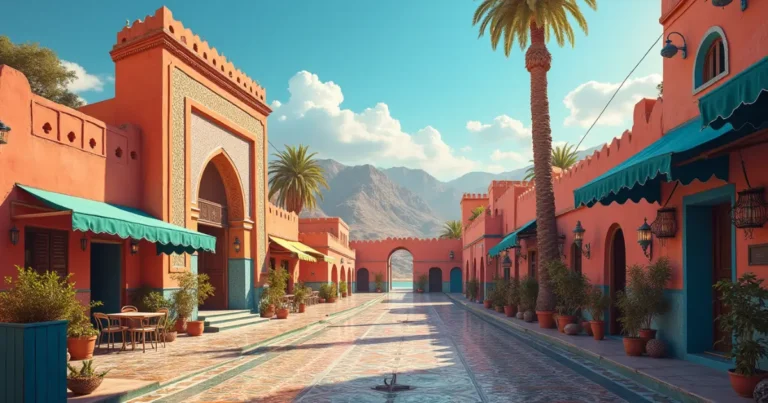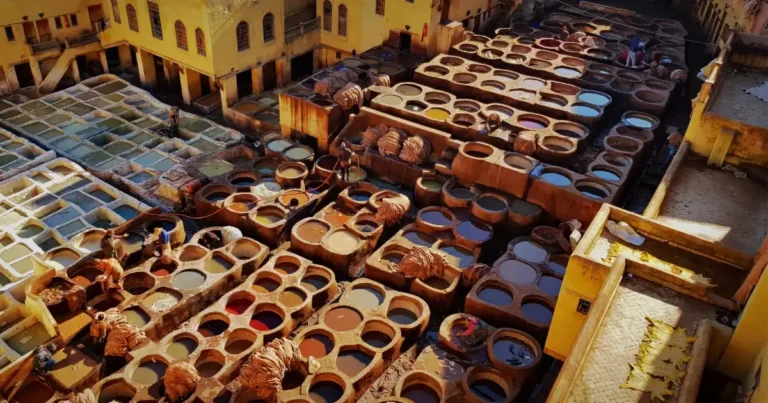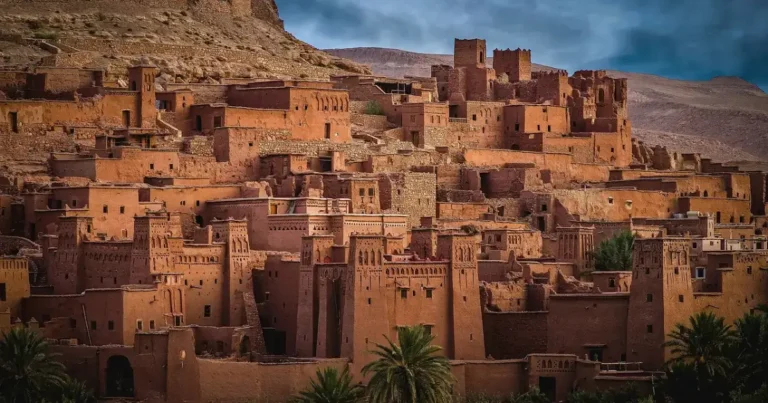The Solo Traveler’s Guide to Marrakech, Morocco
Navigating the vibrant streets of Marrakech alone can be both exhilarating and overwhelming. This comprehensive guide will help solo travelers experience the best of this enchanting Moroccan city while avoiding common pitfalls and maximizing their adventure.
Introduction
Did you know that Marrakech welcomed over 3 million tourists in 2023, with solo travelers making up nearly 40% of international visitors? The allure of this ancient imperial city continues to captivate independent explorers seeking authentic cultural experiences and unique adventures.
As a solo traveler’s paradise, Marrakech offers an intoxicating blend of history, architecture, cuisine, and shopping experiences. This guide to Marrakech, Morocco will walk you through everything you need to know to navigate this fascinating destination confidently on your own.
From the labyrinthine paths of the medina to the peaceful calm of hidden riads, Marrakech rewards the independent traveler with treasures that larger groups might miss. Let’s dive into how to make the most of your solo journey to the Red City.
Top Attractions to Visit
Marrakech delivers a sensory feast of must-visit sites that blend historical significance with unforgettable experiences. Here’s where your solo adventure should take you:
Jemaa el-Fnaa Square
The beating heart of Marrakech transforms from a daytime market to an evening carnival of food stalls, storytellers, and musicians. As a solo traveler, arrive around 4 PM to witness this metamorphosis, find a spot at one of the rooftop cafés surrounding the square (try Café de France), and watch the spectacle unfold with a mint tea in hand.
Bahia Palace
Built in the late 19th century, this architectural masterpiece showcases Moroccan craftsmanship at its finest. The intricate zellige tilework and carved cedar ceilings will leave you spellbound. Visit early morning (before 10 AM) to enjoy the peaceful courtyards before tour groups arrive.
Majorelle Garden
This twelve-acre botanical garden, restored by fashion designer Yves Saint Laurent, offers a serene blue-hued escape from the city’s frenetic energy. The vibrant cobalt buildings against exotic plants create a photographer’s paradise. The attached Berber Museum provides fascinating insights into Morocco’s indigenous culture.
The Medina (Old City)
Getting lost in the 1,000-year-old medina is practically a rite of passage. The narrow derbs (alleyways) reveal small workshops where artisans practice centuries-old crafts. Use offline maps or drop pins at major landmarks, but embrace the adventure of wandering without a strict agenda.
Ben Youssef Madrasa
This former Islamic college displays some of Morocco’s finest architectural details. The central courtyard with its reflecting pool creates a sense of tranquility amidst the bustling medina. The intricate geometric patterns and Arabic calligraphy make this a photographer’s dream.
Hidden Gem: Le Jardin Secret
This recently restored garden complex in the heart of the medina receives fewer visitors but offers an authentic glimpse into traditional Islamic garden design and water engineering. The rooftop provides one of the best panoramic views of the medina and Atlas Mountains.
Best Time to Visit
Timing your solo trip to Marrakech can significantly impact your experience. The city experiences distinct seasonal variations that affect everything from crowd levels to activity options.
Seasonal Breakdown
- Spring (March-May): Arguably the perfect time to visit Marrakech, with average temperatures between 59-77°F (15-25°C). The city blooms with flowers, and the weather allows for comfortable exploration without the scorching summer heat. Visitor numbers begin to rise in April.
- Fall (September-November): Another excellent period with similar temperatures to spring but with declining tourist numbers. September still retains some summer heat, while November may see occasional rainfall.
- Winter (December-February): Daytime temperatures remain pleasant (59-68°F/15-20°C), but nights can drop to 41°F (5°C) or below. Rainfall increases, but there are still many sunny days. December sees a holiday tourism spike, while January and February offer the lowest hotel rates.
- Summer (June-August): Temperatures regularly exceed 100°F (38°C), making midday exploration challenging. However, this season offers the advantage of longer evenings for night markets and outdoor dining when temperatures become more tolerable.
Visitor Data Analysis
According to tourism statistics, Marrakech experiences peak crowds during:
- European school holidays (especially Easter and Christmas)
- The Islamic holy month of Ramadan (dates vary yearly)
- Major events like the Marrakech Film Festival (usually November/December)
As a solo traveler seeking both good weather and manageable crowds, the sweet spots are:
- Mid-to-late May (after European spring holidays)
- Early October (after summer heat, before fall holidays)
- Late January/early February (coolest period but lowest tourism)
Step-by-Step Travel Itinerary
Day 1: Arrival and Orientation
Begin your Marrakech adventure with a strategic orientation day:
- Morning: Check into your accommodation. Riads in the medina offer authentic experiences but consider staying in Gueliz (New City) if it’s your first visit to Morocco for an easier transition.
- Afternoon: Take a guided orientation walking tour of the medina (2-3 hours) to get your bearings. Many riads can arrange private guides for around 300-400 MAD ($30-40).
- Evening: Ease into the sensory explosion of Jemaa el-Fnaa Square. For dinner, try the food stalls numbered 1, 14, or 31, which are consistently recommended by locals. Expect to pay 70-120 MAD ($7-12) for a complete meal.
Solo Traveler Tip: On this first night, have your accommodation arrange a pickup from the food stalls if you’re unfamiliar with navigating the medina after dark.
Day 2: Historical Immersion
Dedicate your second day to Marrakech’s rich architectural heritage:
- Morning: Visit the Koutoubia Mosque (exterior only for non-Muslims) and its gardens, then explore the nearby Bahia Palace (70 MAD entry) and El Badi Palace ruins (70 MAD entry).
- Afternoon: Discover the recently renovated Medersa Ben Youssef (Islamic college, 100 MAD entry) and the adjacent Marrakech Museum (100 MAD entry).
- Evening: Dine at a restaurant with a view of the square such as Nomad or Le Jardin, where prices range from 150-250 MAD ($15-25) for dinner.
Solo Traveler Tip: Most historical sites close around 5-6 PM. Plan your visits accordingly and always carry small bills for entry fees.
Day 3: Gardens and New City
Balance the intensity of the medina with Marrakech’s more serene offerings:
- Morning: Visit the iconic Majorelle Garden (early to avoid crowds, 200 MAD entry including the Berber Museum) and the nearby Yves Saint Laurent Museum (100 MAD entry).
- Afternoon: Explore Gueliz, the French-built new city, with its contemporary art galleries, cafés, and boutiques. Don’t miss MACMA (Moroccan Art and Culture Museum).
- Evening: Experience a traditional hammam (public bath) for relaxation. Mid-range options like Les Bains de Marrakech offer treatments from 350 MAD ($35).
Solo Traveler Tip: A hammam visit is particularly rewarding after days of dusty exploration. Choose between authentic local experiences or more tourist-friendly options with English-speaking staff.
Day 4: Culinary Exploration
Dedicate your fourth day to Moroccan gastronomy:
- Morning: Take a cooking class (typically 500-700 MAD/$50-70), which usually begins with a market tour to select ingredients.
- Afternoon: Explore the Jewish Quarter (Mellah) and its vibrant spice market. Purchase spices to take home at fixed-price shops to avoid haggling.
- Evening: Join a food tour through the medina (around 600 MAD/$60) to sample street food with expert guidance on what’s safe and authentic.
Solo Traveler Tip: Cooking classes are excellent ways to meet other travelers while learning cultural insights from local instructors.
Day 5: Day Trip
Expand your Moroccan experience beyond city limits:

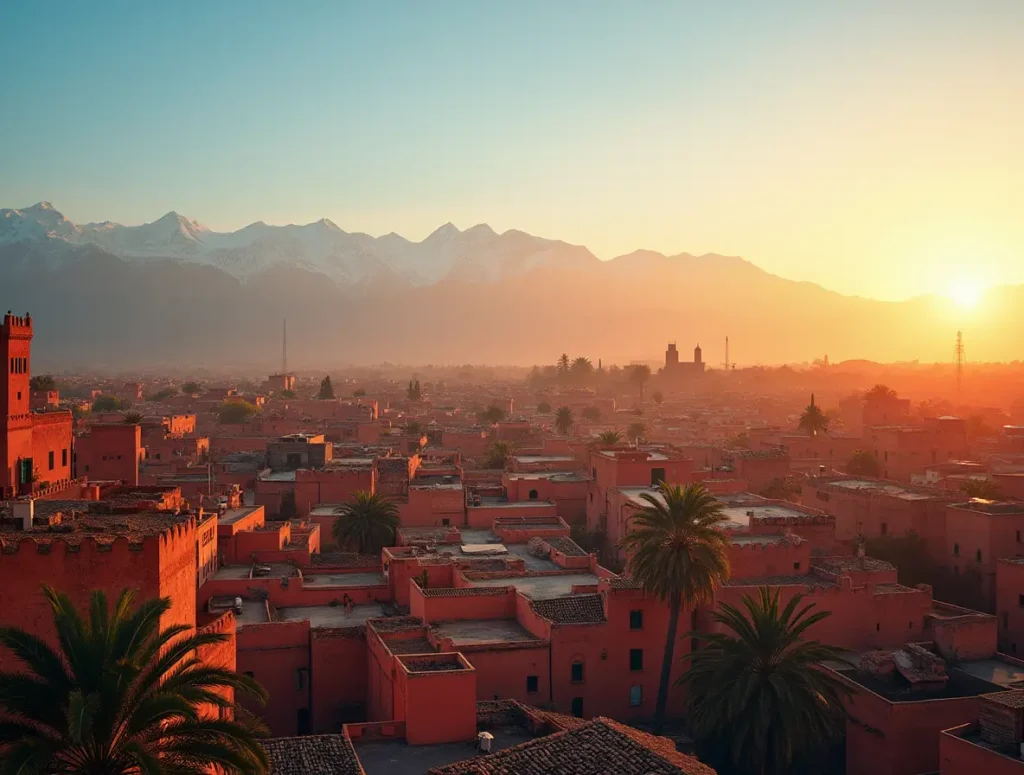
Option A: Atlas Mountains A shared tour (around 700 MAD/$70) takes you to Berber villages, including lunch with a local family and short hiking opportunities.
Option B: Essaouira This coastal town is 2.5 hours away by bus (80-100 MAD each way). Explore its UNESCO-listed medina, working port, and beaches.
Solo Traveler Tip: Shared day trips are excellent opportunities to meet fellow travelers while reducing costs compared to private transportation.
Budget Breakdown
Managing your finances in Marrakech is straightforward with this comprehensive breakdown:
Accommodation
| Category | Price Range (per night) | Example |
|---|---|---|
| Budget | 150-350 MAD ($15-35) | Hostel dormitory or basic riad room |
| Mid-range | 350-800 MAD ($35-80) | Private riad room with breakfast |
| Luxury | 800+ MAD ($80+) | Boutique riad or resort experience |
Solo Traveler Insight: Many riads charge per room rather than per person. As a solo traveler, negotiate for single occupancy discounts, especially during low season.
Food
- Street Food: 20-50 MAD ($2-5) for sandwiches, tagines from market stalls
- Local Restaurants: 70-150 MAD ($7-15) for a complete meal
- Tourist-oriented Restaurants: 150-300 MAD ($15-30) per meal
- Fine Dining: 300+ MAD ($30+)
Daily Food Budget: Plan for 150-300 MAD ($15-30) per day, depending on your preferences.
Activities
- Major Museums and Monuments: 70-200 MAD ($7-20) per entry
- Guided Tours: 200-700 MAD ($20-70) depending on length and exclusivity
- Hammam Experience: 150-600 MAD ($15-60) from local to luxury
- Cooking Classes: 500-700 MAD ($50-70)
Activity Budget: Allocate 150-300 MAD ($15-30) per day for sightseeing.
Transportation
- Airport Transfer: 70-150 MAD ($7-15) for shared shuttle, 200-300 MAD ($20-30) for private taxi
- Petit Taxi (within city): 20-50 MAD ($2-5) per trip
- Day Trip Transportation: 250-700 MAD ($25-70) depending on destination
Transportation Budget: About 100 MAD ($10) per day for in-city movement.
Total Daily Budget
- Shoestring: 400-600 MAD ($40-60) per day
- Comfortable: 600-1200 MAD ($60-120) per day
- Luxury: 1200+ MAD ($120+) per day
Money-Saving Tip: Marrakech is primarily cash-based. Use bank ATMs (avoid currency exchange offices) and always have small bills for negotiating in the souks.
Travel Tips for a Seamless Experience
Safety for Solo Travelers
- Trust your instincts: If something feels uncomfortable, politely but firmly disengage.
- Dress conservatively: Particularly in the medina, modest clothing reduces unwanted attention.
- Fake wedding ring: Some female solo travelers find wearing a simple band reduces harassment.
- Confident walking: Walk purposefully, even when lost, to discourage unwanted approaches.
Navigation Mastery
- Download offline maps: Google Maps and Maps.me work well offline in the medina.
- Learn key landmarks: Orient yourself by major sites like Koutoubia Mosque (visible from many points).
- Use photo documentation: Take pictures of your riad entrance and nearby landmarks.
- Accept getting lost: Consider it part of the experience rather than a frustration.
Cultural Sensitivity
- Photography etiquette: Always ask before photographing people, especially in rural areas.
- Bargaining approach: Start at 40% of the initial price and never show too much interest.
- Ramadan considerations: During this holy month, be discreet about eating/drinking in public during daylight hours.
- Learn basic phrases: “La shukran” (no thank you) and “Shukran” (thank you) go a long way.
Digital Preparation
- eSIM or local SIM: Mobile data is inexpensive and invaluable for navigation.
- Power bank: Essential for long days of exploration and photo-taking.
- VPN service: Useful if you need secure connections for work or banking.
Local Cuisine and Dining Suggestions
Moroccan cuisine offers complex flavors that reflect the country’s position at the crossroads of many cultures. Here’s what to try and where:
Must-Try Dishes
- Tagine: Slow-cooked stews named after the conical clay pot they’re prepared in. Favorites include lamb with prunes or chicken with preserved lemon.
- Couscous: Traditionally served on Fridays, featuring steamed semolina topped with vegetables and meat.
- Pastilla: A sweet-savory pie typically made with pigeon or chicken, almonds, and cinnamon.
- Harira: A hearty soup of tomatoes, lentils, chickpeas, and herbs, especially popular during Ramadan.
- Briouats: Crispy phyllo pastry triangles filled with meat, seafood, or sweet fillings.
Top Dining Experiences
For Authentic Local Flavor
- Chez Lamine: Located near Jemaa el-Fnaa, famous for mechoui (slow-roasted lamb). Expect to pay around 120 MAD ($12).
- Naranj: Hidden in the medina, offering excellent tagines in a quiet courtyard setting. Main dishes 100-150 MAD ($10-15).
For Solo-Friendly Atmospheres
- Café Clock: With communal tables and cultural events, it’s perfect for meeting other travelers. Dishes range from 80-150 MAD ($8-15).
- Nomad: Modern Moroccan cuisine with a rooftop view. Their solo dining bar is perfect for single travelers. Expect 150-250 MAD ($15-25) per meal.
For Special Experiences
- La Maison Arabe: Their legendary cooking school offers half-day classes where you prepare (and eat) a full meal while meeting other food enthusiasts.
- Evening Food Tour: Companies like Marrakech Food Tours offer guided culinary walks for around 600 MAD ($60), ideal for solo travelers seeking both food and social interaction.
Solo Dining Tips
- Timing matters: Lunch is typically served from 12-2:30 PM, while dinner rarely starts before 7:30 PM.
- Bring reading material: Some traditional restaurants may be less accustomed to solo diners.
- Riads serve meals: Most riads offer dinner by reservation, which can be a comfortable option for solo travelers.
- Street food strategy: When trying street food alone, follow locals and choose busy stalls with high turnover.
Common Mistakes to Avoid
Even seasoned travelers can fall into these Marrakech pitfalls. Here’s how to avoid them:
Navigation Mistakes
- Relying only on Google Maps: The medina’s narrow alleys sometimes confuse GPS. Use multiple navigation tools and learn visual landmarks.
- Following unsolicited guides: Anyone offering to “show you the way” expects payment. Politely decline with a firm “La, shukran” (no, thank you).
- Accepting the first taxi fare: Negotiate before entering taxis, and expect to pay about half the initially quoted price.
Cultural Missteps
- Photographing without permission: This is especially problematic with street performers, who expect payment if photographed.
- Wearing revealing clothing: In 2022, a survey showed that 78% of female travelers who dressed conservatively reported fewer instances of harassment.
- Entering mosques as non-Muslims: Most Moroccan mosques, except Hassan II in Casablanca, are closed to non-Muslims.
Shopping Errors
- Shopping on day one: Premature purchases lead to buyer’s remorse as you discover better quality and prices later.
- Not comparing prices: Walk through the entire souk before purchasing to understand fair market rates.
- Taking the first price: According to vendor interviews, initial prices for tourists are often 300-400% higher than the final acceptable price.
Health Oversights
- Drinking tap water: Stick to bottled water (check that seals are intact).
- Eating unwashed raw produce: Enjoy Moroccan salads at established restaurants rather than street stalls.
- Neglecting sun protection: Marrakech’s UV index regularly exceeds 11 in summer months, warranting serious sun protection.
Logistical Lapses
- Arriving without cash: Many riads and small businesses don’t accept cards. Withdraw cash at airport ATMs upon arrival.
- Tight connection times: Allow 3+ hours for international connections when departing, as security can be time-consuming.
- Underestimating medina walks: What looks like a short distance on maps can take 30+ minutes through winding alleys.
Packing Tips for Your Trip
Packing strategically for Marrakech’s climate and cultural context will enhance your comfort:
Clothing Essentials
- Layers: Temperature variations of 20+°F (10+°C) between day and night are common.
- Modest options: Loose pants, long skirts, and tops covering shoulders show respect and reduce unwanted attention.
- Comfortable walking shoes: Marrakech’s uneven cobblestones demand supportive footwear.
- Light scarf: Multi-purpose for sun protection, impromptu mosque visits, or evening chill.
- Swimwear: For riad pools or hammam visits (though most provide disposable underwear).
Practical Items
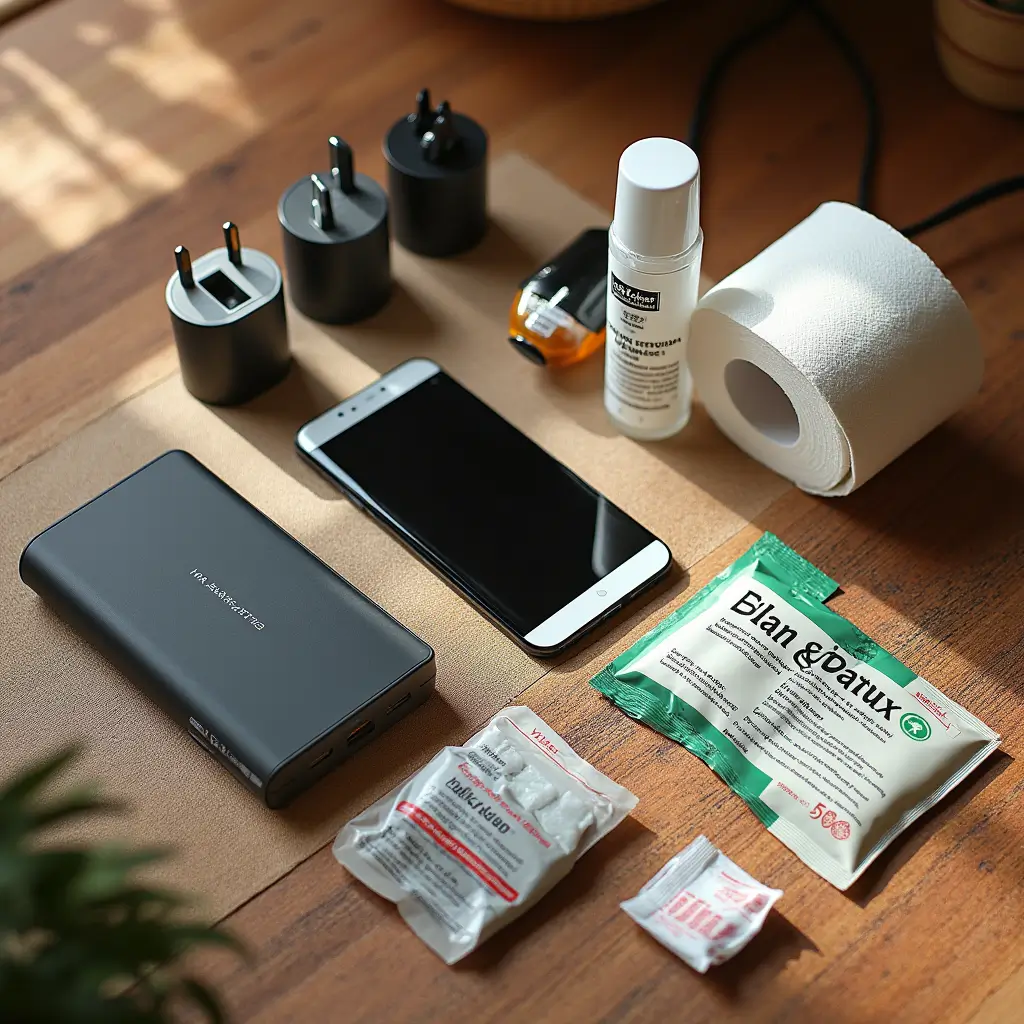
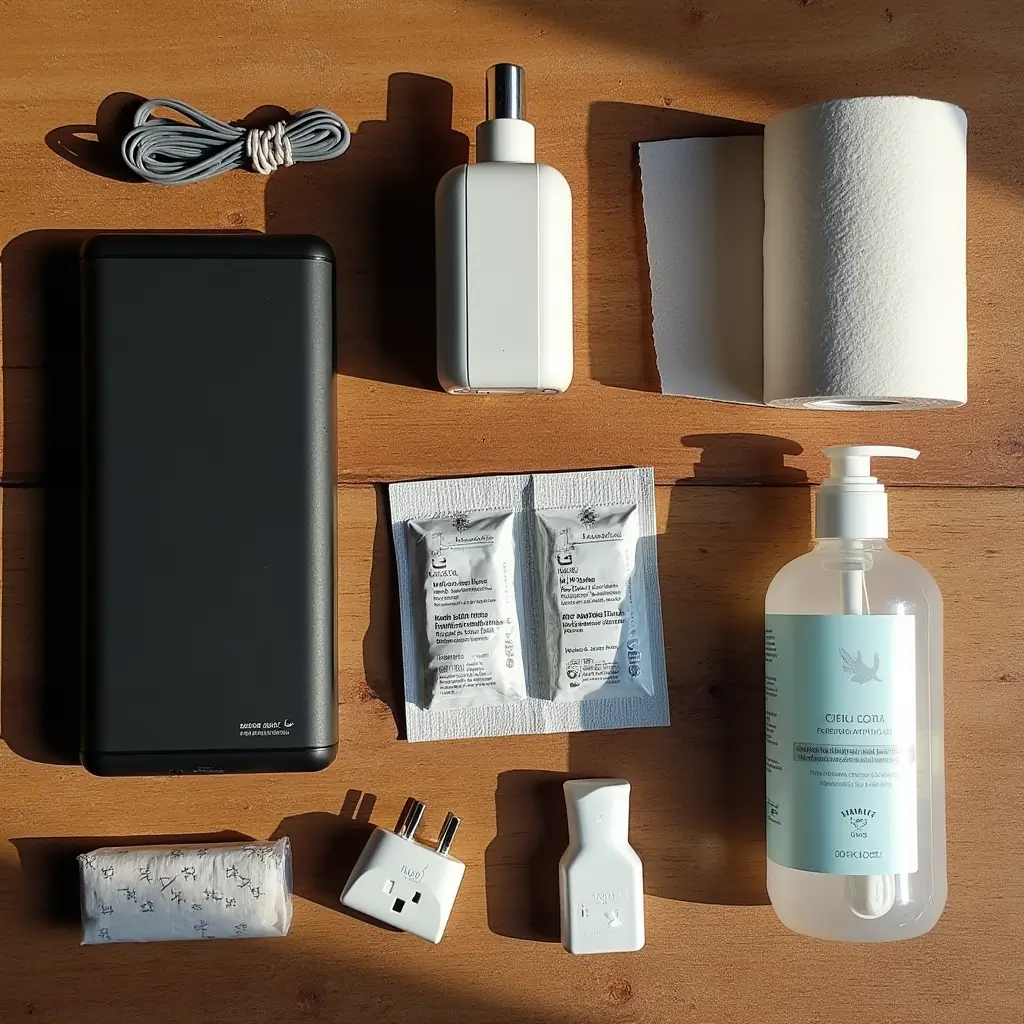
- Portable power bank: Essential for navigation and photography during full days of exploration.
- Multiple adapters: Morocco uses European-style plugs (type C/E), but outlet quality varies.
- Portable toilet paper/tissues: Public restrooms often lack toilet paper.
- Hand sanitizer: For street food adventures and public transportation.
- Basic first-aid supplies: Including anti-diarrheal medication, pain relievers, and bandages.
Seasonal Considerations
- Summer (June-August): Add high-SPF sunscreen, wide-brimmed hat, lightweight moisture-wicking clothes, and electrolyte packets for hydration.
- Winter (December-February): Include a warm jacket for evenings, when temperatures can drop to 41°F (5°C).
- Spring/Fall: Rain protection for occasional showers; umbrellas also serve as sun protection.
Tech Recommendations
- Unlocked smartphone: Local SIM cards offer affordable data (approximately 100 MAD/$10 for 10GB).
- Camera protection: Dust-resistant camera bags protect equipment in the medina.
- Noise-canceling headphones: For peaceful moments amidst Marrakech’s constant activity.
Space-Saving Strategy
- Leave room for purchases: Marrakech’s souks offer irresistible textiles, ceramics, and leather goods.
- Packing cubes: Organize clothes by outfit rather than type to streamline morning decisions.
- Compression bags: Especially useful for bulkier winter clothing if visiting in cooler months.
Conclusion
Marrakech offers solo travelers an intoxicating blend of sensory experiences, cultural immersion, and personal discovery. From navigating ancient medina pathways to savoring complex flavors in hidden courtyards, the Red City rewards independent explorers with memories that will last a lifetime. Armed with this guide to Marrakech, Morocco, you’re now prepared to embrace both the challenges and charms of this magnificent destination.
Remember that the key to solo travel in Marrakech lies in balancing preparation with spontaneity. Some of your most meaningful experiences will come from unplanned encounters and unexpected discoveries. Trust your instincts, maintain cultural awareness, and approach each day with a sense of adventure.
Have you visited Marrakech solo? Share your experiences and tips in the comments below! If you found this guide helpful, subscribe to our newsletter for more solo travel inspiration.
FAQs
Is Marrakech safe for solo female travelers?
While Marrakech is generally safe, female travelers should take standard precautions. Dress modestly, project confidence, avoid walking alone late at night in isolated areas, and be prepared for some unwanted attention. Many female travelers report positive experiences by balancing assertiveness with respect for local customs.
How many days do I need to explore Marrakech?
A minimum of three full days allows you to see major attractions, but 5-7 days provides a more relaxed pace and opportunities for day trips. According to tourism data, travelers spending at least five days report higher satisfaction rates than those on shorter visits.
Do I need to speak French or Arabic to get around?
While knowing basic phrases is helpful, you can navigate Marrakech with English, especially in tourist areas. Learning a few Arabic greetings and “thank you” (shukran) shows respect. In restaurants and shops, English and French are widely understood.
What’s the best way to handle money in Marrakech?
Use bank ATMs (not standalone machines) for the best exchange rates. Carry small bills for shopping and tipping. While credit cards are accepted at upscale establishments, cash dominates in the medina. The Moroccan dirham (MAD) is a closed currency, so exchange leftover dirhams before leaving the country.
How should I deal with persistent vendors or guides?
A firm but polite “La, shukran” (No, thank you) while continuing to walk is usually effective. Avoid engaging in conversations if you’re not interested, as this can be interpreted as interest. Remember that persistence is part of local commerce culture rather than a personal affront.
Can I visit the Sahara Desert from Marrakech?
While Marrakech is often used as a starting point for desert tours, reaching the actual Sahara requires at least a 3-day round trip. Closer desert experiences at Agafay Desert (45 minutes from Marrakech) offer similar landscapes for shorter itineraries.

